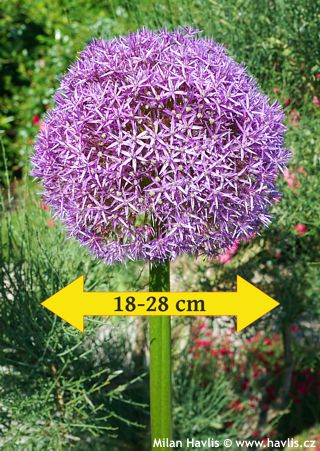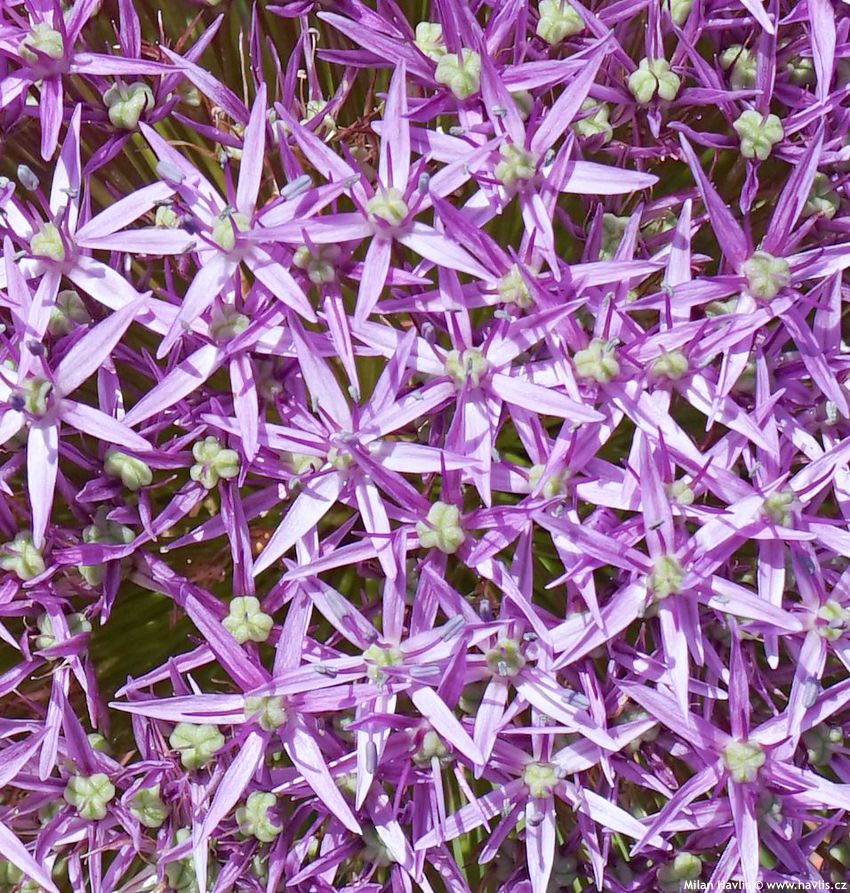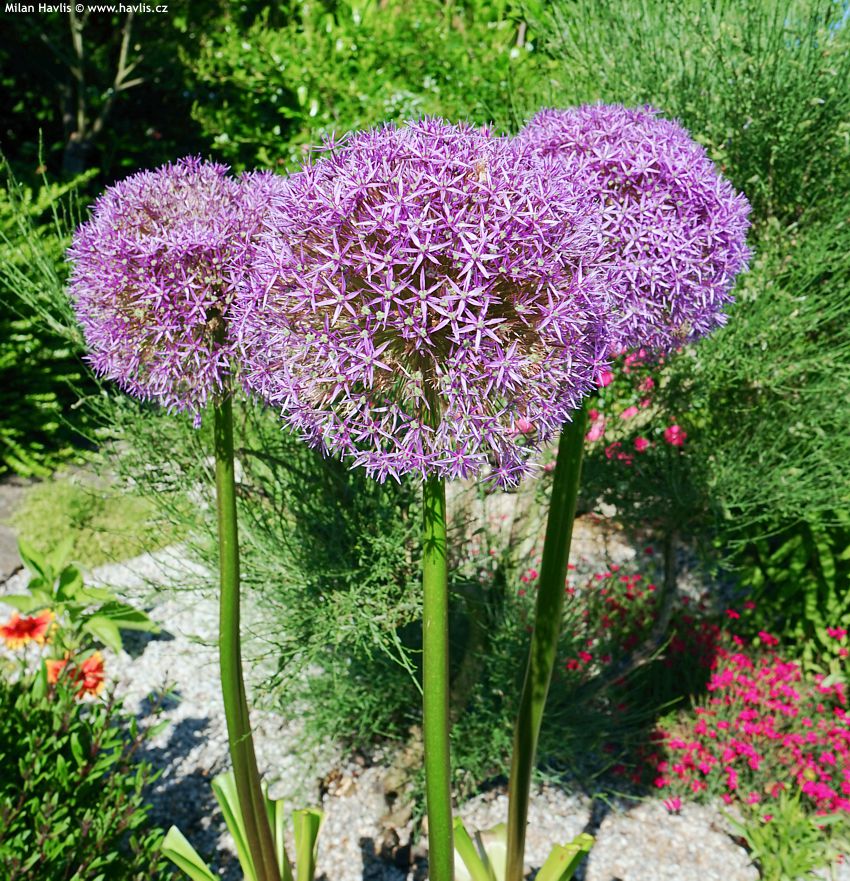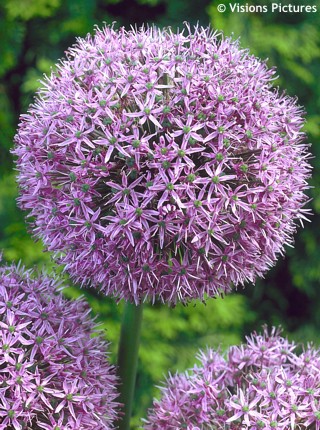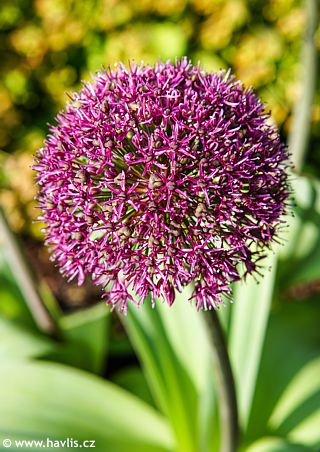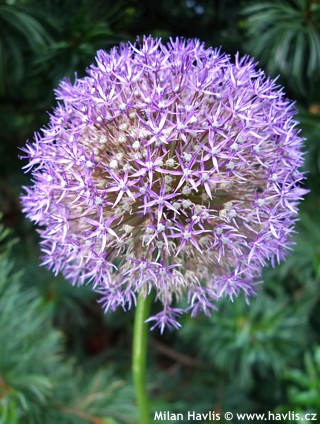Allium 'GLOBEMASTER' ornamental onion
size/type
mid-sized perennial,mid-sized perennial
usual height
0,6-0,8m
usual width
0,2-0,3m
leaves
deciduous broadleaf
colour of leaves
flowers
showy
colour of flowers
blooming time
June-July
location
full sun
USDA zone (lowest)
4 (down to -34°C)
winter protection
for zone 5+6

for zone 7

categorized
Allium
Ornamental onion is an attractive bulbous perennial commonly found all around mountainous regions of northern hemisphere. Most sought-after varieties are those with huge globular inflorescence in mid spring, yet there are others that bloom in the middle of summer offering handsome foliage all season round.Description of the plant:
Globemaster allium produces possibly the largest flower heads among all ornamental onions registered so far. They are commonly 18-20 cm across, and under ideal growing conditions with plenty of fertilizing they can reach up to 28 cm. The flower heads are composed of numerous star-shaped, lilac violet flowers from early June until early July. They appear atop extremely sturdy stems that grow just about 60-80 cm tall. Strap-shaped, basal leaves are light to pale green, and die back soon after the peak flowering phase. You can remove them or let them wilt and compost in situ if their unsightly state is not irritating. The variety was bred by Jan Bijl as a cross between a.macleanii and a.cristophii, and introduced in 1971.Large flowered ornamental onions need very well-drained soil or sand-based loam, and location in full sun. Avoid soils that remain wet especially when the plant is dormant. Should you have no other choice dig up the plant in midsummer, and plant it in a pot that is kept away from excess rain until early spring when it can be transplanted to the ground again, now with new roots that developed in the pot during dormancy. The bulb should be at least 5 cm or better 10 cm below the ground level. The stems are strong enough to withstand common weather caprices, however, open and exposed locations (windy seaside, large open fields, smooth mountain slopes etc.) are not recommended. In spite of the garlic/onion smell no part of the plant is edible. Hardy to about. -34°C (USDA zone 4).
Last update 01-01-2020
QUICK PRICE OVERVIEW
CURRENTLY SOLD OUT












